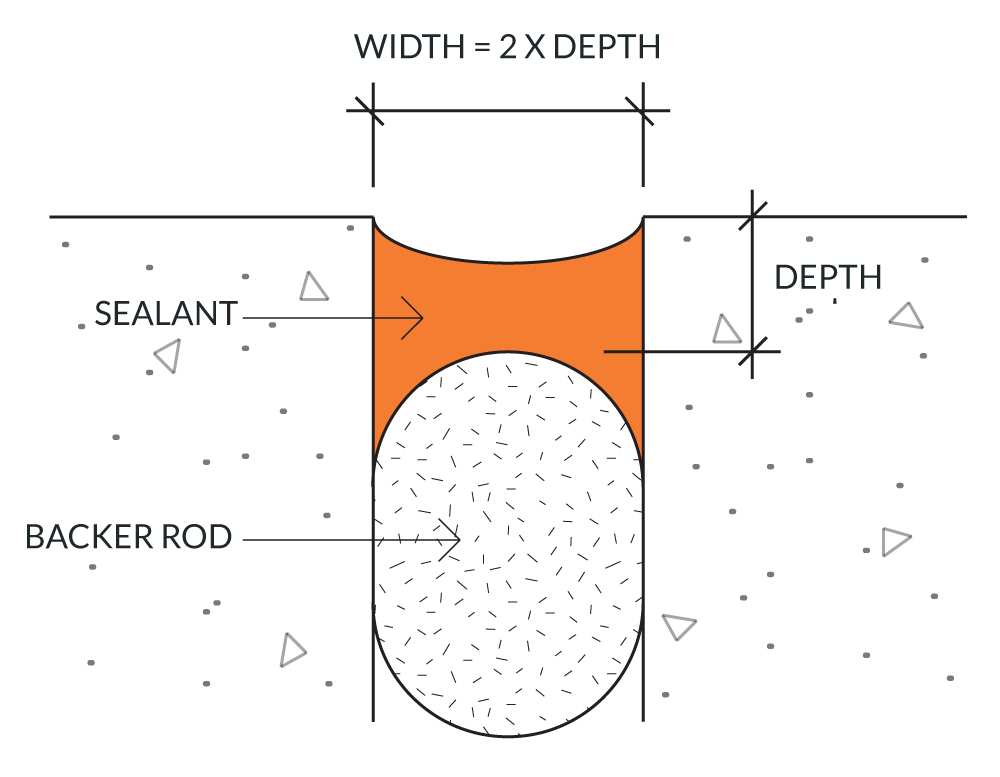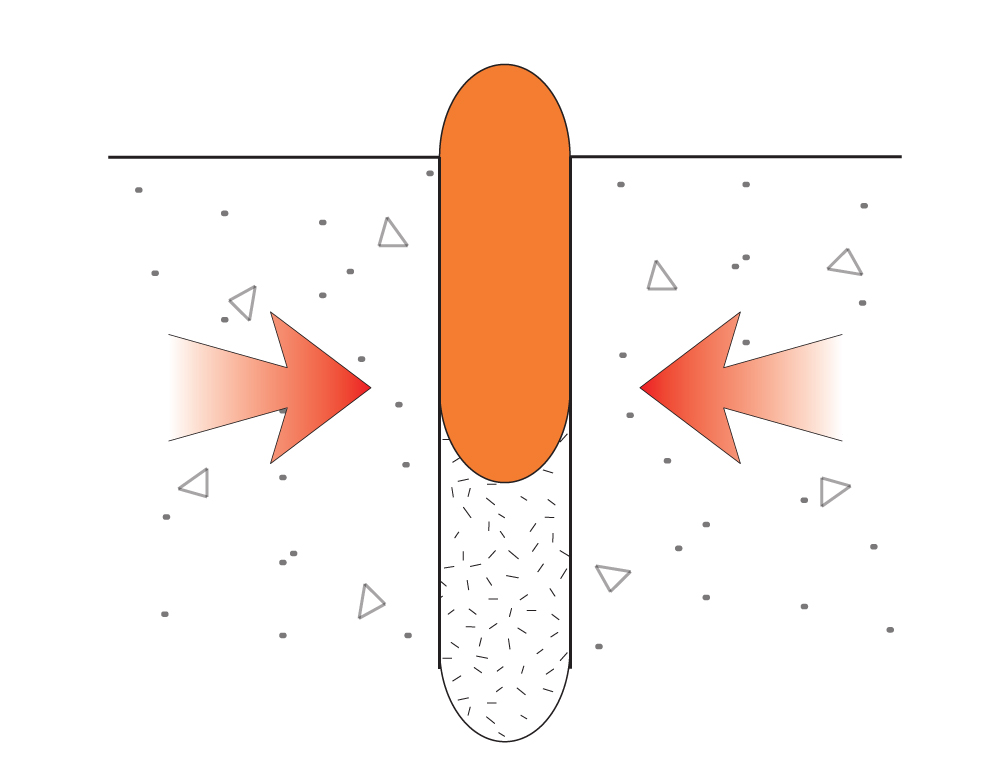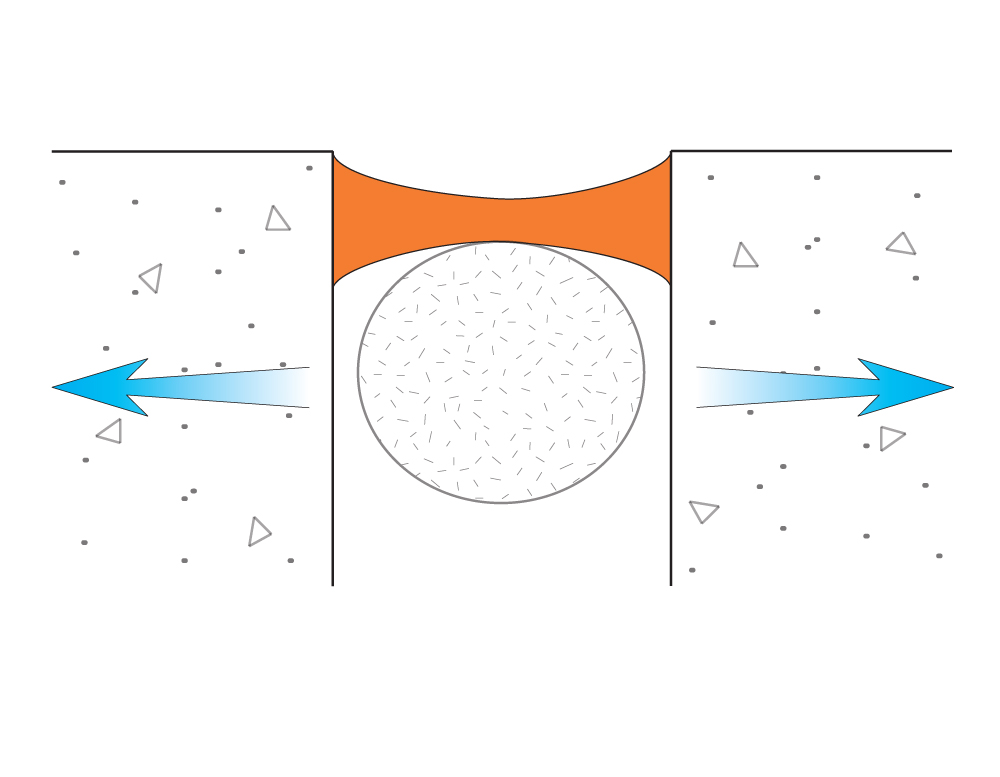2.1 Sealant Joint Design
While the humble sealant joint may be uncelebrated, it is vital to building durability and longevity. Proper installation is key to sealant joint integrity and function throughout a life of expansion and compression, wetting and drying, exposure, and temperature fluctuation.
Note: Because sealants are just as good at keeping moisture in as they are in keeping it out, placing a bead of caulk in the wrong location can result in moisture accumulation, mold and rot, envelope failure, and hundreds of thousands of dollars in repair and remediation. If we know anything, we know that building envelopes will get wet – the question is, “where will the water go?” Make sure you know the answer throughout construction, especially as you seal joints.
- Joint Rule of Thumb: Sealant should be hourglass-shaped and width should be twice depth (shown in diagram).
- Backer rod diameter should be 25% larger than the joint to be filled.
- Joint size should be 4x the expected amount of movement (usually about 1/2” of space on all sides of the window casement).
- Ideal joints are within a range of 1/4” at minimum and 1/2” at maximum. Joints outside this range require special design and installation.
- Always use the right tool: sealant is not caulk and should never be tooled with a finger (saliva interferes with bond).
- Substrates need to be clean, dry, and properly prepared (primer if necessary).
- When dealing with thermally sensitive materials, apply sealant under average temperature conditions because joints expand and contract with changes in temperature (see below).

Joint Expression and Compression

- Hot weather causes substrates to expand, compressing the joint.

- Cold weather causes substrates to shrink, expanding the joint.